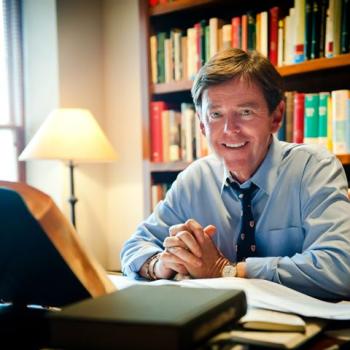Anticlerical agitation was more consequence than cause of the English Reformation, argues David Loades in his contribution to Anticlericalism.
Fashions change, including religious ones; monkish religion was not as popular by the beginning of the sixteenth century as it had been, and the energy was with the friars. But changing religious fashions do not amount to anticlericalism. At the local level, he concludes, “the great majority of parochial clergy were doing a decent job according to their lights, and were on good terms with most of their neighbours most of the time” (5).
That can’t, however, be the whole story. If everything was so good, “why was there a Reformation at all? Was the Crown far more powerful than anyone had hitherto suspected? Was there an ‘elite conspiracy’ to rob the Church of its power, and the mass of the population of its spiritual solace?” (2). Some in the church of England must have been unhappy, else why so massive a shift?
To attribute the Reformation to mass dissatisfaction is wrong-headed from the outset, since the direction of church and nation were not really determined by the masses. Loades wisely looks for friction between the church and elite laymen. One source of discontent was the sheer wealth and power of the church: “you did not have to be a heretic to be uneasily aware that this was not quite what the fishermen of Galilee had intended.” Because of its power, it attracted ambitious men who had little sense of vocation or commitment to the church as such.
Education was a path to advancement, but the church had a virtual monopoly on education: To be a scholar was to be in holy orders. This “bred resentment, not among the rural rank and file, whom it scarcely affected, but among such educated such educated laymen as there were, and within the ranks of conscientious and reforming clergy.” This is the “anticlericalism” of Chaucer, which is “not directed against priests as such, but against the Church as an institution, which neglected its missionary function and bred a swarm of greedy parasites to take advantage of its unassailable position” (5–6).
Conflicts over ecclesiastical power and wealth came to a head in property disputes. The church as a whole held “as much as one-third of the kingdom in 1500”—monasteries, cathedrals, even village churches were landed. An institution with that much property was ripe for litigation, which was “constant”: “Cathedral chapters were in dispute with the corporations of their proximate towns; bishops tussled with neighboring lords; yeoman and gentlemen disputed titles with rectors.” Common lawyers tried to keep the litigation in their bailiwick, and the church sometimes responded by forcing things into church courts by citing opponents for violations of church law (6).
Thus, “there was . . . a certain amount of anti-ecclesisticism before the Reformation; a feeling that the Church was too rich, too self-satisfied and incapable of responding to new challenges” (8).
For the most part, anticlericalism arose with the Reformation. Protestant polemicists attacked priests as ignorant and unqualified—which they indeed were, by Protestant standards that required knowledge of the Bible and capacity to teach (9–10). Henry VIII found that anticlerical rhetoric could be used to his advantage. He used it “because it was a convenient weapon, rather than because it evoked a powerful response.” He wanted a male heir, but even before the succession crisis emerged, he expressed his unhappiness at the independence of the clergy: They were “‘scarse his subjects,’ and were evading his laws” (13). Monasteries were dissolved not because monks were hated but “because they were no longer seen as performing the vital spiritual function that had once justified their huge resources.” To be sure, he had his eye on monastic wealth, but “his move would never have succeeded if many others had not shared his covetousness, or if the prestige of all the orders had been as high as that of the Carthusians” (13).















